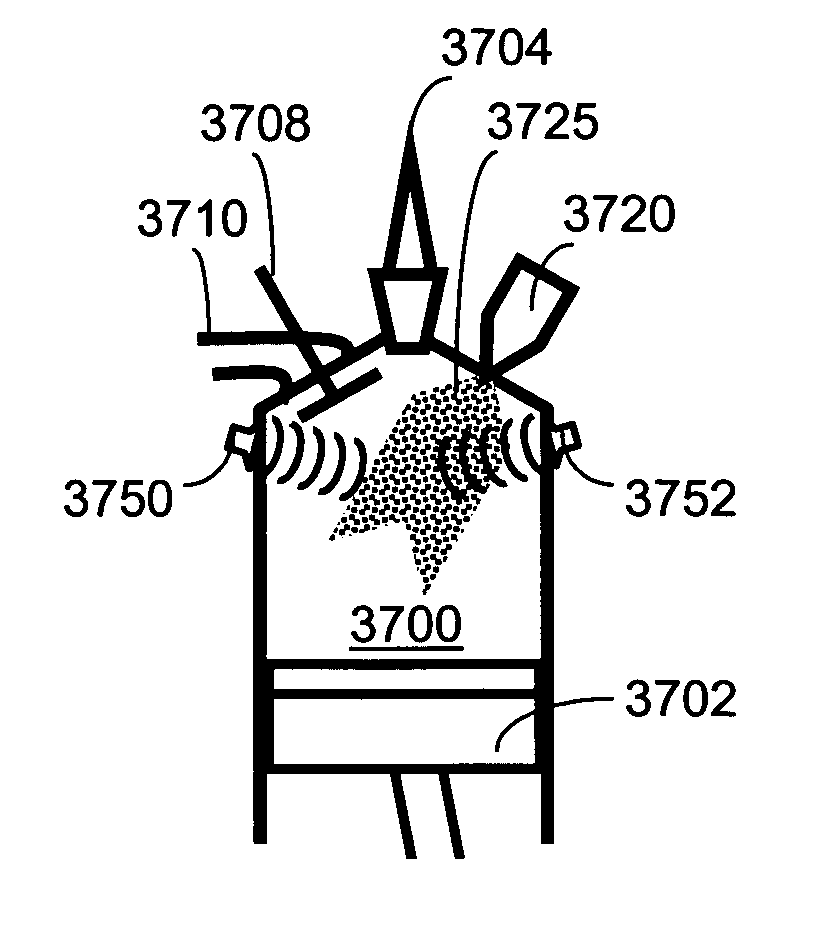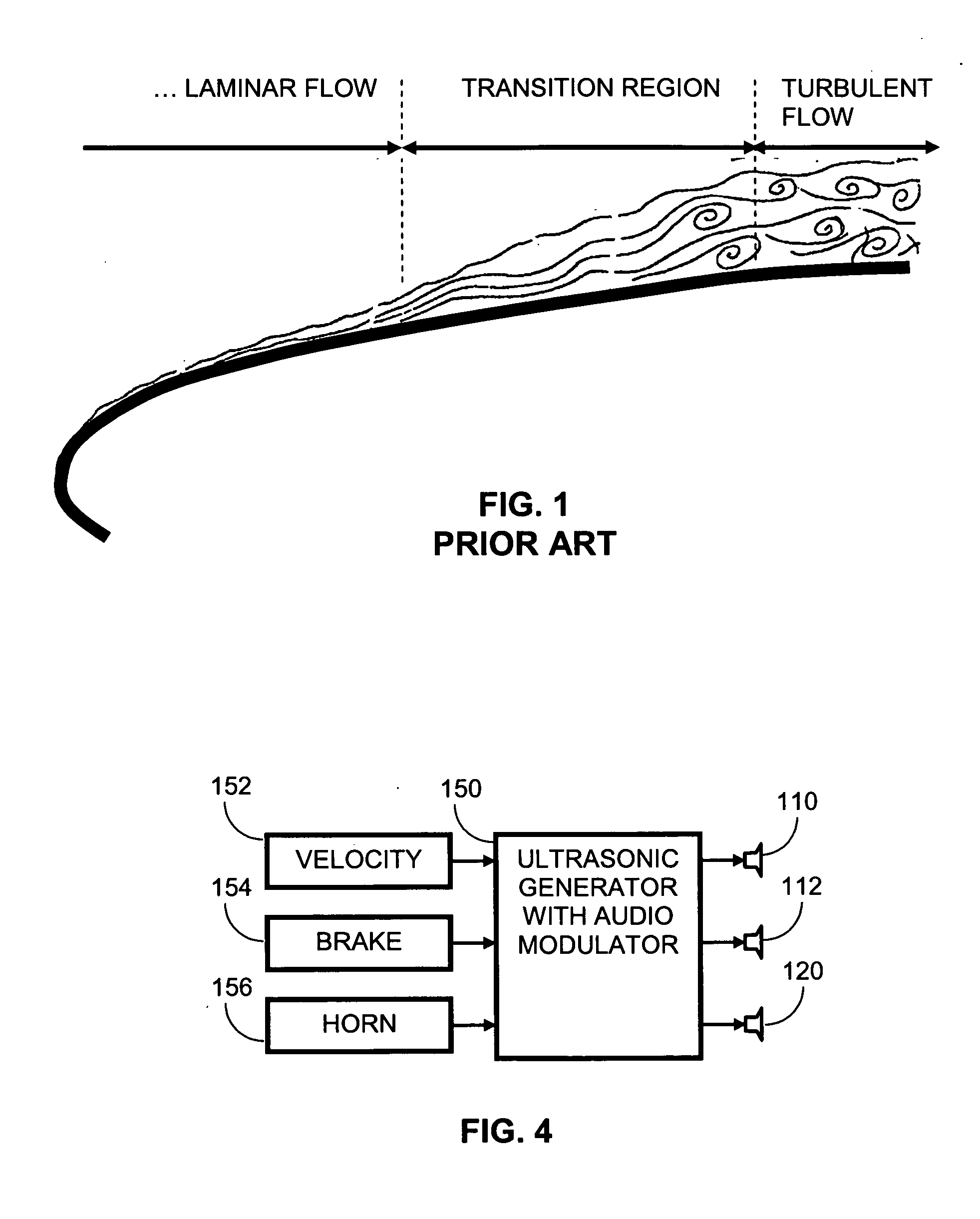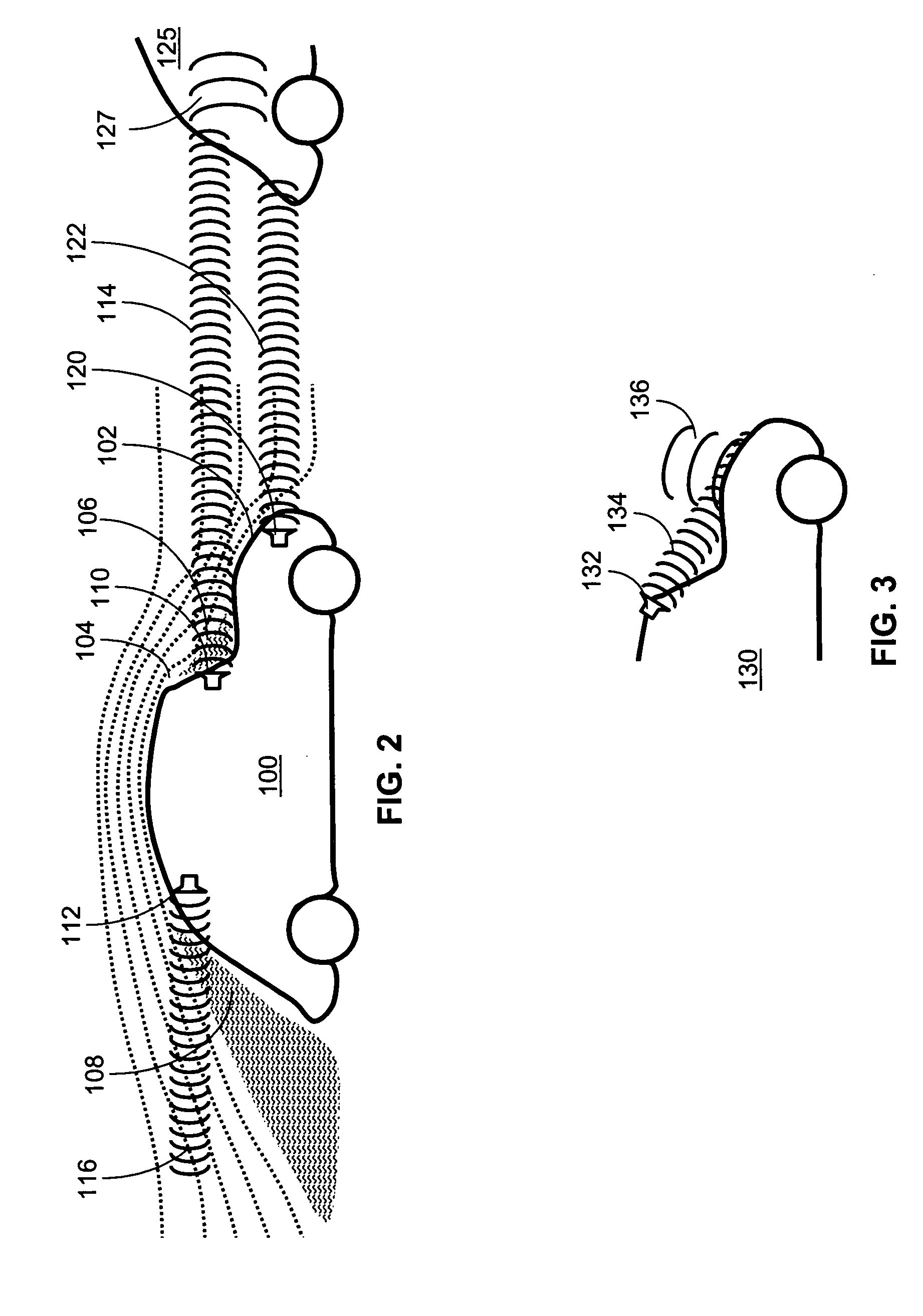Active drag and thrust modulation system and methods
a technology of active drag and thrust, applied in the field of vehicles, can solve the problems of increasing aerodynamic drag that requires greater power consumption, increasing pressure gradient, and insufficient maintenance of relatively low kinetic energy of air molecules closest to the airfoil surface, and achieve the effect of enhancing the atomization of the fuel spray
- Summary
- Abstract
- Description
- Claims
- Application Information
AI Technical Summary
Benefits of technology
Problems solved by technology
Method used
Image
Examples
Embodiment Construction
[0074]FIG. 1 illustrates a typical lifting aerodynamic surface having a laminar flow boundary layer. Thin laminar boundary layer flow is observed in the laminar flow region from the leading edge to a point at which transition begins. The beginning of the transition region is characterized by a thickening of the boundary layer and the appearance of small eddying perturbations in airstream velocity. As the airstream progresses through the transition region, certain airflow disturbances within a range of predictable oscillatory frequencies, known as Tollmien-Schlichting waves, become amplified to form eddies that cause a transfer of momentum from the higher energy air near the outer surface of the boundary layer to the low energy air at the surface. At this point the airstream enters the turbulent region, being comprised of many large eddies and characterized by a relatively higher average velocity near the airfoil surface. The higher velocity creates greater surface friction with the ...
PUM
 Login to View More
Login to View More Abstract
Description
Claims
Application Information
 Login to View More
Login to View More - R&D
- Intellectual Property
- Life Sciences
- Materials
- Tech Scout
- Unparalleled Data Quality
- Higher Quality Content
- 60% Fewer Hallucinations
Browse by: Latest US Patents, China's latest patents, Technical Efficacy Thesaurus, Application Domain, Technology Topic, Popular Technical Reports.
© 2025 PatSnap. All rights reserved.Legal|Privacy policy|Modern Slavery Act Transparency Statement|Sitemap|About US| Contact US: help@patsnap.com



